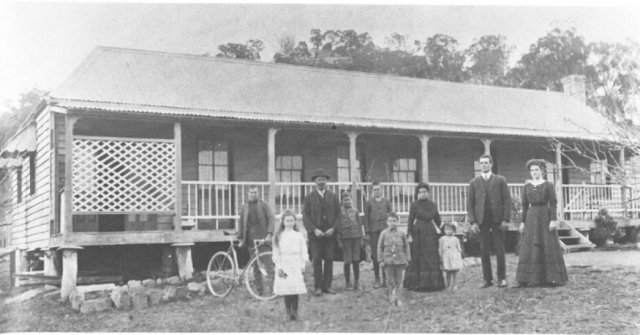Discovery of tin in 1872 created such a rush that the normal means of transport of a century ago were totally unable to cope.
It was suggested that a line to Stanthorpe was even more important than a line to from Ipswich to Brisbane.
Government plus townsmen and miners had a vision of an almost unlimited supply of tin to be mined.
Chief engineer Mr J. Thorneloe Smith was sent to do a survey.
He was patient and confident in the rail construction’s considerable delay.
The miners and townsmen, however, were less patient, and in 1875 forwarded a petition in which they claimed that an urgent necessity for extension existed and that traffic between the towns of Stanthorpe and Warwick was already 1000 tons per month for dead weight alone, and that a great amount of New England traffic would be diverted over the border.
On 15th October 1875, the ‘Border Post’ speaks of a suggested Agricultural and Horticultural Association being formed with the aim of encouraging permanent agricultural settlement in the district.
The Editorial records: “Wheat and oats sown a few months ago are doing well, barely and lucerne have been planted many months past. We have the assurance of experienced vigenors, that as wine growing soil the land is unsurpassed, as well as for the cultivation of deciduous fruits of all kinds of which we already have ocular demonstration. Vegetables are of finest quality, white-heart cabbages 10 lb to 14 lbs in weight and potatoes 1 lb each, are common occurrences. These are tangible grounds for the assumption a new industry will develop with encouragement. This encouragement is the society’s desire.”
Following a second meeting on the 28th October, a third was held on the 8th November 1875, firmly establishing the Society as “The Border Agricultural, Horticultural and Mining Society.”
The meeting was held at Mrs. Farrell’s Hotel, and the permanently established committee was elected.
State operated schools were known as National Schools before the passing of the 1875 Act.
By the end of this year, enrolment at Stanthorpe had risen to 348, the staff being Mr J.J. Caine, Mrs Caine, J. Brunton Stephens, and pupil teachers M. Caine, R. McClay and F. Caine. At Sugarloaf the enrolment stood at 164 under the guidance of Mr Outridge and pupil teachers John Collins and Joseph Johnson.
As one might have expected, numbers fluctuated wildly, but even more disturbing was the comparatively low average attendance.
Discovery of tin also brought an influx of settlers to the Maryland and Ruby Creek areas, and a cry soon went up for schools there.
It would appear, once again, that some kind of private venture school operated very early on the field, but no such details are available.
It is known that a school opened at Maryland in 1875, a site having been secured on 16th September, March, 1874.
At the end of the first year, there were 51 children on the roll.
A provisional school opening in 1875 at Herding-yard Creek, but in the following year both its name and status changed.
Henceforth it was known as the Amosfield Public School. Its enrolment at the end of 1875 was 48.
It is of interest that children of the Stonebridge families attended this school for more than sixty years.
Other schools over the border were located near Wilson’s Downfall, on the Undercliffe Road, at Bookookoorara, and Liston.
One of the most exciting stories of educational development is that of St Joseph’s School.
Though Fr McDonough had tried to secure nuns for his school opened in October, 1872, he was unsuccessful.
It was not until January, 1875, that nuns arrived in Stanthorpe.
The first nuns were sisters M. Agnes, M, Stanislaus, M. Francis and another novice who soon returned to Brisbane.
With them were two laywomen, Miss O’Reilly and Miss Johanna Bridgeman and the Rev.
Mother Bridget, head of the Queensland Order.
The journey to Stanthorpe for the sisters was not without incident, for just before 6pm on 24th January 1875, when the train was about two miles south of Cambooya, the engine was almost brought to a stand by the fierceness of the wind.
Rain came down in torrents and beat under the carriage doors until the floors were awash.









